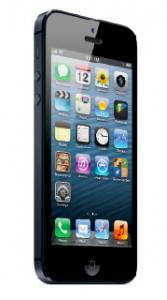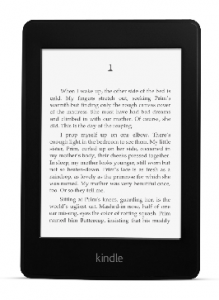Apple recently announced the much-anticipated iPhone 5 along with a new version of the iPod Touch, both of which feature a 4-in. screen. A week earlier, Amazon announced its new Kindle Paperwhite e-reader, which has a 6-in. front-lit display. And it’s rumored that in October, Apple will be holding a launch event to announce a smaller, 7-in. version of the iPad, dubbed the iPad Mini, to capture some of rival Samsung’s Galaxy Tab market share.
There’s no shortage of devices to choose from, and narrowing down the possible options can be a challenge. But if the ability to comfortably read e-books on your device is high on your priority list, screen size has to be one of the key considerations, along with ease of portability.
Despite their enhancements, the new options on the market still might not hit the mark. With the iPhone 5, you’ll get a screen that’s a half-inch larger than the 4S’s, but is a 4-in. screen really large enough for reading? The Paperwhite offers a larger screen on a device that is optimized for reading e-books, but does it make sense to carry around a single-purpose gadget that won’t quite fit in your pocket?
According to a survey released by the Pew Internet & American Life Project in April 2012, “29% of those who read e-books consume e-books on their cell phones,” though only 5% said they do so daily. In a late-2011 Gartner survey of 510 owners of tablets and at least two other connected devices, only 7% said they used their mobile phones to read a book.
A March 2012 report from Strategy Analytics indicates that smartphone users are simply not satisfied with what they have. Ninety percent of the American and British smartphone owners surveyed said they wanted a smartphone with a larger screen, with most of them pointing to 4 to 4.5 inches as the “ideal” size.
But just as some users might find current smartphones too small, others might find larger devices to be too big. For example, one reviewer of the Galaxy Note smartphone, which has a 5.3-in screen, complained, “The Note’s size does in fact fit between many tablets and smartphones. But make no mistake, the Note is a phone. A really big phone. Too big.”
Early last year, GigaOM’s Kevin C. Tofel wrote an opinion piece titled “Why I Just Dumped the iPad (Hint: Size Matters).” His primary reason for switching to Samsung’s 7-in. Galaxy Tab: better portability. Said Tofel, “I’m willing to give up a smidge of usability or a wider array of software to gain the ability to easily use the device everywhere I go.”
So there are trade-offs. The iPhone 5 is a multifunction device that is easily portable, but it comes with a high price tag and a screen that, though larger than the 4S’s, is not optimal for reading. The Paperwhite offers a larger screen and a smaller price tag, and is light and portable, if not pocket-size, but it doesn’t offer the functionality of a smartphone. And then there are tablets like the iPad Mini and the Galaxy Tab, which, thanks to their larger size, provide a more comfortable screen size for reading but are more awkward to carry around than a smarphone and don’t offer the same features.
Meanwhile, it remains to be seen how ongoing patent lawsuits filed by Apple against Samsung, the world leader in cellphone sales, could affect the smartphone and tablet markets. If Apple can remove competing products like Samsung’s 4.8-in. Galaxy S III smartphone from the market through legal maneuvers, it stands to reap significant gains.
In the end, what it comes down to is personal choice—which features a consumer is willing to sacrifice, and whether the scales tip in favor of price, features, or size. Until and unless the “perfect” combination of smartphone and tablet features become available, we will just have to choose among the imperfect options that are out there.
Do you read e-books on your smartphone? What do you think is the ideal screen size for reading? Let us know in the comments section below.
Posted by: Gina Barrett



